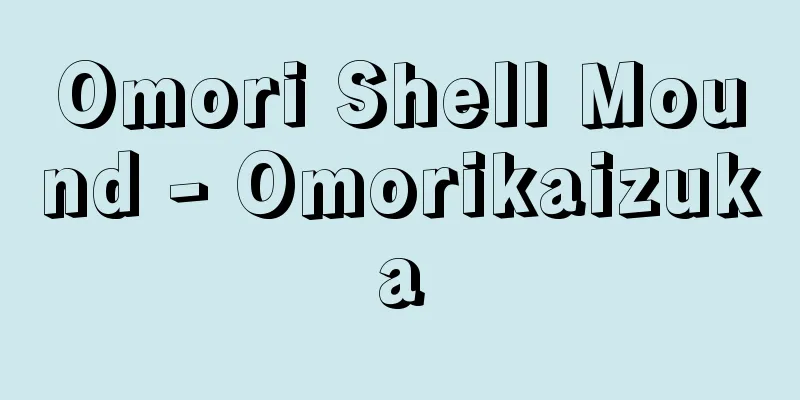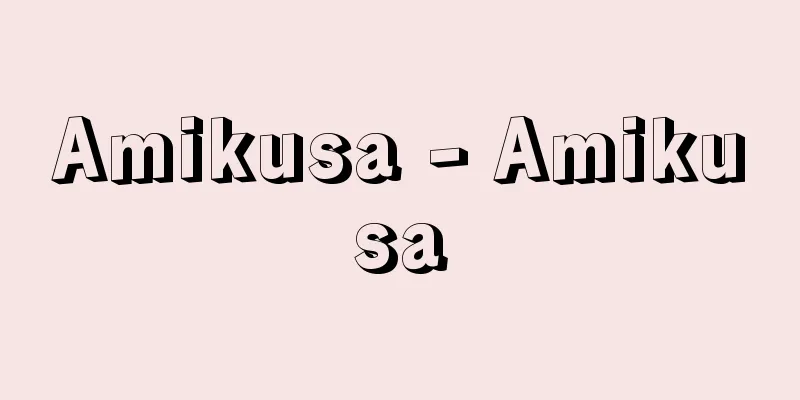Omori Shell Mound - Omorikaizuka

|
This shell mound was discovered by American zoologist Edward S. Morse in June 1877 (Meiji 10) from the window of a train heading from Yokohama to Shinbashi, Tokyo. A monument to the "Omori Shell Mound" stands next to the tracks of the Tokaido Main Line in Oi 6-chome, Shinagawa Ward, Tokyo. There is also a monument to the "Omori Shell Ruins" in Sanno 1-chome, Ota Ward. This is likely because Morse noted that there was also a smaller shell mound to the south of the Omori Shell Mound. As such, the two sites are now designated as a national historic site as a group. Morse excavated the shell mound in October 1877, and published a report on the excavation under the title " Shell Moons of Omori " in the first volume of the English Bulletin of the Faculty of Science, University of Tokyo in 1879. In December of the same year, "Omori Kairu Koko Antiques" was published, translated by Yatabe Yoshikichi. This was the first academic excavation in Japan, and the above book was also the first excavation report. In other words, the Omori Shell Mound is a monumental site that marked the first step in Japanese archaeological research, especially in the study of Jomon pottery culture. The Omori Shell Mound is a relatively large shell mound dating to the late to final Jomon period, and the pottery, stone tools and other materials excavated by Morse are still preserved at the University Museum, The University of Tokyo. [Teruya Esaka September 19, 2018] "Omori Shell Mounds" edited by the Tokyo Omori Shell Mounds Preservation Society (1967, Chuokoron-Bijutsu Shuppan)" ▽ "Omori Shell Mounds" by E.S. Morse, edited and translated by Yoshiro Kondo and Makoto Sahara (Iwanami Bunko)" [Reference] | |It stands along the JR line in Oi, Shinagawa. The Omori Shell Mound is an archaeological site that straddles Shinagawa and Ota wards, and the area of the site on the Shinagawa side where this monument is located is the Shinagawa Omori Shell Mound Archaeological Garden. Nationally designated historic site Shinagawa Ward, Tokyo ©Yutaka Sakano "> Omori Shell Mound Monument It is located in Sanno, Ota Ward, a few hundred meters south of the "Omori Shell Mound" monument (Oi, Shinagawa Ward). It is said that the exact location of the shell mound discovered by Morse was unknown at one time, and so they were erected separately in the early Showa period. Both of these stone monuments are nationally designated historic sites. Ota Ward, Tokyo ©Yutaka Sakano "> Omori Shell Ruins Monument Source: Shogakukan Encyclopedia Nipponica About Encyclopedia Nipponica Information | Legend |
|
アメリカの動物学者エドワード・S・モースが1877年(明治10)6月、横浜から東京・新橋(しんばし)へ向かう汽車の車窓から発見した貝塚。東京都品川区大井6丁目、東海道本線の線路ぎわに「大森貝塚」の碑がある。また大田区山王1丁目地内に「大森貝墟(きょ)」の碑がある。これはモースが大森貝塚の南にも小貝塚があると記したものであろう。したがって現在は一群のものとして両地を国の史跡に指定している。 モースは1877年10月、この貝塚の発掘調査を実施し、1879年東京大学理学部英文紀要の第一冊として『SHELL MOUNDS OF OMORI』の表題で、同貝塚の発掘調査報告を刊行した。また同年12月、矢田部良吉訳で『大森介墟古物編』が刊行された。これは日本における学問的な発掘調査の最初のものであり、また前記著書も発掘調査報告書として最初のものである。すなわち大森貝塚は日本の考古学研究、とくに縄文土器文化研究の第一歩を踏み出した記念すべき遺跡である。 なお、大森貝塚は縄文文化後期から晩期にわたる比較的規模の大きな貝塚で、モースの発掘した土器、石器などの資料は、現在も東京大学総合研究博物館に保存されている。 [江坂輝彌 2018年9月19日] 『東京都大森貝塚保存会編『大森貝塚』(1967・中央公論美術出版)』▽『E・S・モース著、近藤義郎・佐原真編・訳『大森貝塚』(岩波文庫)』 [参照項目] | |品川区大井のJR線沿いに建つ。大森貝塚は品川区と大田区にまたがる遺跡で、この碑のある品川区側の遺跡一帯は品川区立大森貝塚遺跡庭園となっている。国指定史跡 東京都品川区©Yutaka Sakano"> 大森貝塚の碑 「大森貝塚」の碑(品川区大井)の数百m南、大田区山王にある。一時モースが発見した貝塚の正確な位置が不明となったことで、昭和時代初期に別々に建てられたともいわれている。この二つの石碑は、ともに国指定史跡。東京都大田区©Yutaka Sakano"> 大森貝墟の碑 出典 小学館 日本大百科全書(ニッポニカ)日本大百科全書(ニッポニカ)について 情報 | 凡例 |
<<: Hikoshichi Omori - Hikoshichi Omori
Recommend
Rigid Solvent - Goseiyoubai
A solvent that keeps solutes stable and in a state...
Wali - Wari (English spelling)
An Indian poet. Born in Aurangabad in the Deccan....
Amigo
〘Noun〙 (amigo) A close male friend. Source: The Se...
Durga
…The oldest temple, Laḍ-khān, has a simple form w...
Fernandez, Dominique
Born August 25, 1929 in Paris. French author. Stud...
Golden needle vegetable
…The young shoots, buds and flowers of most speci...
Nezame no toko - Nezame no toko
This is a scenic spot on the Kiso River in Agemat...
Average wage - Heikinchingin
〘noun〙① The wage that is used as the basis for the...
"One Thread"
…Member of the Japan Art Academy. Model for Sawak...
Chiarelli, L.
…Many of these works were aimed at performance ra...
Heihaku
It is a general term for things offered to the go...
Sea whistle - Kaiteki
...The reed inserted into the mouthpiece has a be...
Cartesian coordinates
Please see the "Cartesian coordinates" ...
Violin - Violin (English spelling) violin English
The lute is a bowed string instrument of the viol...
Bone setter - sekkotsushi
The official name is "Judo Therapist". A...









![Tenkawa [village] - Tenkawa](/upload/images/67cc47cd4a67e.webp)